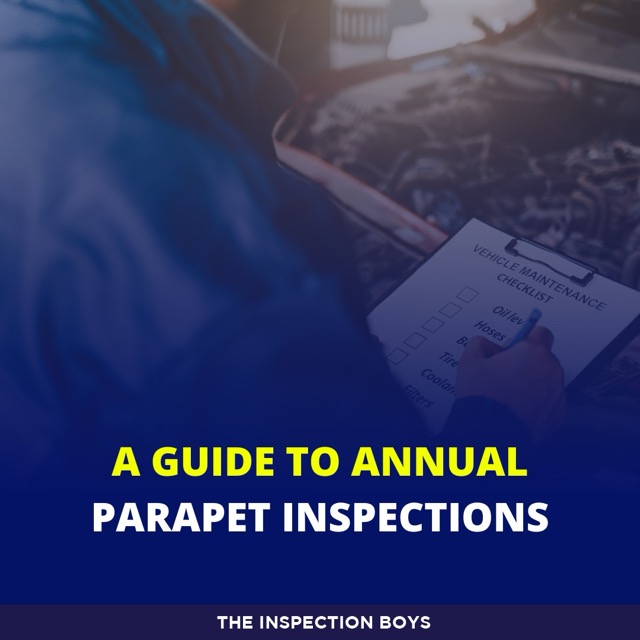A Guide to Annual Parapet Inspections
Owning a building involves many responsibilities, one of which might not immediately come to mind: maintaining the parapets. These are the walls that extend vertically above your roof, and though they might be easy to overlook, they play a vital role in building safety.
What is a Parapet?
Parapets are constructed from materials like brick, stone, or concrete and serve multiple functions:
- Safety: They prevent accidents by stopping people and objects from falling off the roof.
- Drainage: They assist in directing rainwater away from the building, reducing leak risks.
- Aesthetics: They can enhance the visual appeal of a building.
Why Are Annual Parapet Inspections Important?
Parapets face constant exposure to weather and temperature changes, which can cause:
- Cracks and Spalling: These can weaken the parapet and reduce its effectiveness as a safety barrier.
- Loose Mortar or Bricks: These pose a risk of falling, endangering anyone below or on the roof.
- Water Infiltration: This can cause leaks and damage the roof structure.
Conducting regular inspections with a qualified professional can catch these problems early, making it possible to fix them promptly and avoid more severe issues. This proactive maintenance not only safeguards your building’s structure but also ensures the safety of individuals on and around the building.
What Happens During a Parapet Inspection?
Inspectors thoroughly examine parapets using various methods, depending on the building’s height and accessibility:
- Visual Inspection from the Roof: Inspectors look for any signs of damage or wear.
- Using Scaffolding or Boom Lifts: This is necessary for taller or less accessible buildings.
- Drone Inspections: Drones can safely and efficiently inspect difficult-to-reach areas.
After the inspection, you will receive a detailed report that highlights:
- The parapet’s overall condition.
- Any issues or damage discovered.
- Recommendations for necessary repairs or maintenance.
Who Needs Annual Parapet Inspections?
While regulations may differ by location, some areas, such as New York City starting January 1st, 2024, require annual inspections for all buildings with parapets facing a public space, no matter the building’s height. Even without legal requirements, it’s wise for any building with parapets to undergo annual inspections to avoid potential issues and costs in the future.
Benefits of Regular Parapet Inspections
The advantages of keeping up with parapet inspections include:
- Ensuring Public Safety: Regular maintenance helps prevent accidents.
- Protecting Your Investment: Addressing small issues early can prevent costly future repairs.
- Extending the Lifespan of Your Roof: Ensuring the parapets function correctly aids in overall roof maintenance.
- Reducing Liability Risks: Keeping your building’s safety features in good order can minimize liability risks in the event of accidents.
Conclusion
While they may not be the most noticeable aspect of building maintenance, parapet inspections are crucial for safety and structural integrity. Regular inspections not only protect your investment but also provide peace of mind knowing that your building is safe and well-maintained.

